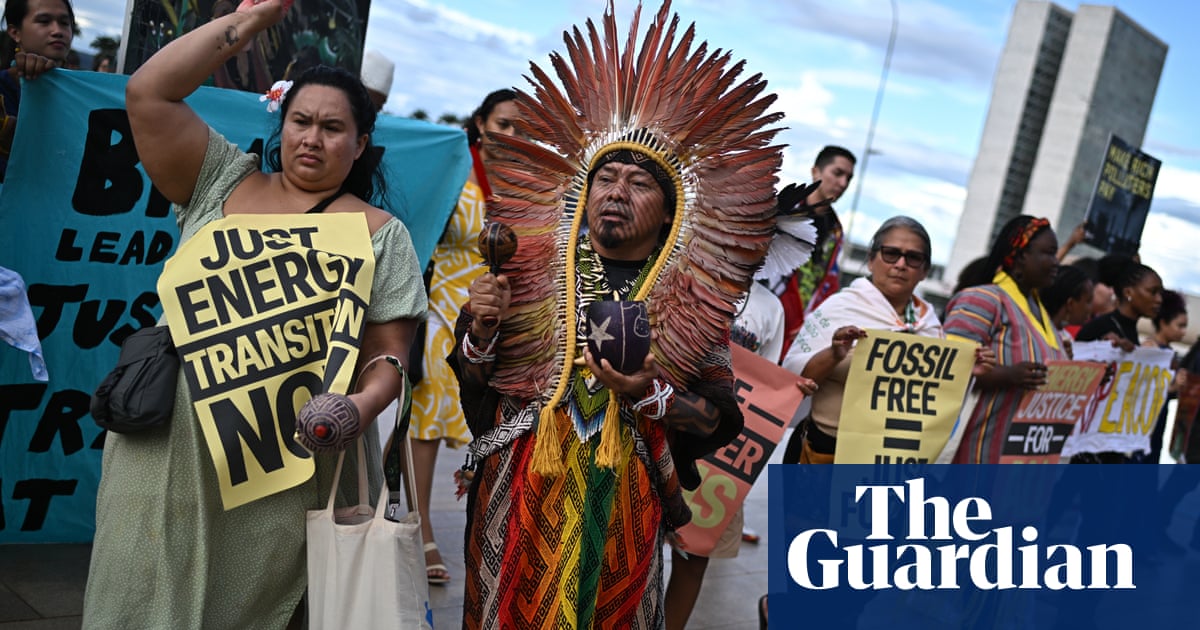The upcoming climate summit in Belém, Brazil, has sparked controversy, especially with the installation of artificial metal trees where once lush vegetation thrived. These fake trees symbolize the challenges faced in a city that is rapidly losing its natural beauty.
Belém, located at the mouth of the Amazon River, is preparing to host a huge international event while grappling with its reputation as one of Brazil’s poorest cities. Critics are worried about logistics—like a shortage of hotel rooms, causing prices to skyrocket—and the impact of increased traffic, with an expected influx of around 50,000 visitors. Conservationists have voiced their concerns over deforestation as new roads are paved, clearing hundreds of hectares of vegetation for infrastructure that many doubt will be finished in time.
The state governor, Helder Barbalho, however, remains optimistic. He claims all preparations are moving forward as planned and emphasizes the importance of giving local voices a platform at this summit, especially after years of events held in less democratic nations. Barbalho highlighted that this summit could be an opportunity for meaningful participation from the community.
Yet, the city’s transformation raises questions. Critics argue the main beneficiaries of this construction boom are wealthy developers, while efforts to create inclusive economic growth and protect the environment seem limited. For example, a new urban park is being added, yet its design, heavily inspired by a model in Singapore, has drawn criticism—some residents are frustrated by the lack of real trees given Belém’s struggle with heat and urbanization.
Over the past two decades, Belém has lost much of its greenery, a situation exacerbated by the rapid expansion of infrastructure linked to the summit. Local urbanism expert Ana Claudia Cardoso expressed concerns, predicting a decline in tree cover in the city.
Barbalho insists the new roads were planned to mitigate environmental damage, featuring animal crossings and high environmental standards aimed at reducing traffic emissions. He also stressed Pará’s efforts to lead nationwide deforestation reduction, having halved deforestation rates since 2018.
As preparation continues, many feel both hope and skepticism. Recent surveys suggest that local sentiments are mixed, with some seeing a chance for change while others worry about the potential pitfalls of heightened expectations. The summit’s ambassador, André Aranha Corrêa do Lago, aims to focus on a collaborative agenda that emphasizes civil society’s role, urging them to press for action on climate change.
Indigenous communities and environmental activists are expected to play significant roles during the summit. Their voices have been amplified, promising to highlight both their struggles and contributions at the "people’s summit," which is anticipated to attract around 15,000 participants. While demonstrations are planned, the potential for conflict looms large, given tensions with law enforcement.
Belém’s diverse culture and natural heritage might surprise summit attendees, many of whom may arrive with preconceived notions of the Amazon as a dense jungle. Organizer Mariana Guimarães hopes this summit provides an opportunity for visitors to experience Belém’s unique culture, its food, music, and a richer understanding of the Amazon beyond its forests.
As we approach the summit, the world watches closely. This gathering could ignite important discussions on climate action, but whether it will yield lasting change remains uncertain. The outcome will hinge not only on the talks in Belém but also on the voices that rise in the city streets throughout the event.
For more detailed statistics on Brazil’s climate initiatives, you can refer to the World Resources Institute.





















